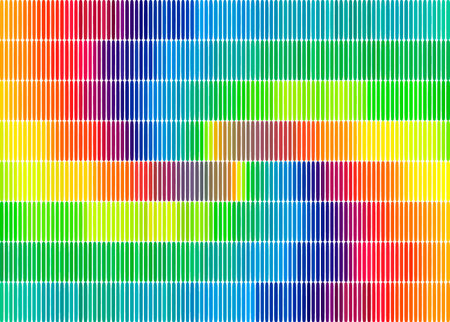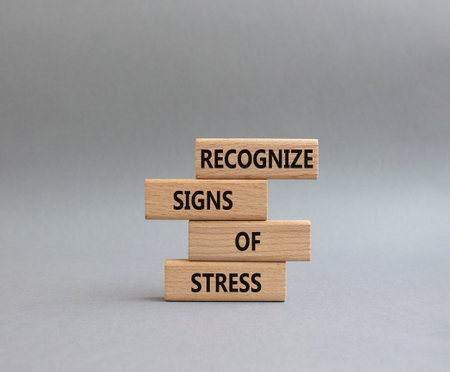Understanding LGBTQ+ Symbols and Color Significance
Colors play a powerful role in expressing identity, pride, and love within the LGBTQ+ community. Each flag and symbol carries its own unique meaning, using specific colors to represent diverse identities, histories, and aspirations for acceptance. In this section, we explore how colors have become an essential part of LGBTQ+ visibility and inclusivity.
The Evolution of LGBTQ+ Flags
The most recognized LGBTQ+ symbol is the rainbow flag, first designed by Gilbert Baker in 1978. Over time, new flags have emerged to represent different identities within the community. Each uses color not just for visual impact, but as a meaningful code for personal experience and collective belonging.
Key Colors and Their Meanings
| Flag | Colors | Meaning |
|---|---|---|
| Pride (Rainbow) Flag | Red, Orange, Yellow, Green, Blue, Violet | Red: Life; Orange: Healing; Yellow: Sunlight; Green: Nature; Blue: Harmony; Violet: Spirit |
| Transgender Flag | Light Blue, Pink, White | Blue: Boys; Pink: Girls; White: Nonbinary or transitioning individuals |
| Bisexual Flag | Pink, Purple, Blue | Pink: Attraction to same gender; Purple: Attraction to all genders; Blue: Attraction to opposite gender |
| Pansexual Flag | Pink, Yellow, Blue | Pink: Attraction to women; Yellow: Attraction to nonbinary people; Blue: Attraction to men |
| Asexual Flag | Black, Grey, White, Purple | Black: Asexuality; Grey: Grey-asexuality/demigray; White: Non-asexual partners/allies; Purple: Community |
| Nonbinary Flag | Yellow, White, Purple, Black | Yellow: Outside binary; White: Many genders; Purple: Blend of male/female; Black: Agender people |
Cultural Impact and Representation in the U.S.
LGBTQ+ colors go beyond visual symbolism—they foster connection and solidarity. In American culture, these flags are displayed at Pride parades, community centers, and even homes as symbols of support. For many people across the United States, showing these colors is a statement of acceptance and an invitation to be one’s authentic self.
The Importance of Inclusive Colors in Relationships
The use of inclusive colors isn’t just about public celebration. It also plays a role in private relationships by creating spaces where everyone feels seen and valued. Whether through art, home decor, or fashion choices, integrating LGBTQ+ colors can express love that honors diverse identities within partnerships and families.
2. Creating Welcoming Spaces with Inclusive Colors
LGBTQ+ inclusive colors are more than just a trend—they’re a way to celebrate love, identity, and acceptance for everyone. When we thoughtfully use these colors in our homes, community centers, and public spaces, we help create environments where everyone feels seen and respected. Let’s explore simple ways to make spaces welcoming using LGBTQ+ inclusive colors.
Why Do Inclusive Colors Matter?
Colors like those found in the rainbow Pride flag or the Progress Pride flag symbolize diversity, unity, and support for LGBTQ+ communities. Using these colors sends a clear message: “You belong here.” This is important in places where people gather—like living rooms, libraries, schools, or local cafés.
Simple Ideas for Home Decor
| Space | How to Use Inclusive Colors |
|---|---|
| Living Room | Add rainbow throw pillows or artwork that features inclusive flags. |
| Bedroom | Use bedding or accent rugs with soft Pride-inspired hues for a subtle touch. |
| Entryway | Hang a small Progress Pride flag or place a colorful welcome mat at the door. |
LGBTQ+ Friendly Community Centers
Community centers can use inclusive colors to signal openness and care. Paint murals with rainbow elements or display posters with affirming messages in vibrant shades. Even adding colored chairs or banners can encourage people to feel safe and celebrated.
Public Spaces That Embrace Everyone
Parks, city buildings, and local businesses can foster belonging by featuring LGBTQ+ colors during Pride Month—or year-round! This could be as simple as hanging rainbow flags, lighting up buildings in Pride colors, or using inclusive signage. These gestures are powerful signs of respect.
Quick Tips for Choosing Colors Thoughtfully
- Include all major Pride flag colors (like red, orange, yellow, green, blue, purple, black, brown, white, pink, light blue).
- Avoid stereotypes—choose combinations that feel authentic and respectful.
- Ask community members what makes them feel welcome before decorating shared spaces.
- Keep it fun—mix colors with plants, art, or family photos for a personal touch.
When we decorate with intention using LGBTQ+ inclusive colors, every space becomes an invitation for connection and acceptance. It’s an easy way to say: “You are valued just as you are.”

3. Love, Relationships, and the Power of Color
Colors play a big role in how we express ourselves and connect with others, especially within the LGBTQ+ community. Choosing colors that reflect your true identity can help you feel more comfortable, affirmed, and safe in your relationships. When you use inclusive colors in your home, clothing, or even gifts, you are sending a message of love and acceptance—not just to yourself, but also to your partner and community.
How Colors Uplift LGBTQ+ Love
Every color carries its own meaning and energy. For many people in the LGBTQ+ community, these meanings go beyond style—they represent pride, hope, solidarity, and authenticity. Here’s how some popular LGBTQ+ colors can support love and relationships:
| Color | Symbolism | How It Supports Love |
|---|---|---|
| Red | Life, passion | Encourages open hearts and deep connections |
| Orange | Healing | Promotes understanding and emotional safety |
| Yellow | Sunlight, joy | Sparks happiness and brings positivity into relationships |
| Green | Growth | Supports personal development as a couple or individual |
| Blue | Harmony | Brings peace and calm to communication and shared spaces |
| Purple | Spirit | Represents authenticity and shared values in love |
Affirmation Through Color Choices
Selecting colors that match your identity or relationship status can be empowering. For example, displaying rainbow flags or decorating with pride-themed colors in shared spaces can make both partners feel seen and valued. It’s also a subtle way to let guests know your space is inclusive.
Personalizing Your Space for Safety and Belonging
LGBTQ+ couples often personalize their homes with art, textiles, or accent pieces in pride colors. This not only makes the space feel welcoming but also creates a sense of safety—a reminder that this is a place where everyone is respected for who they are.
Tips for Using Inclusive Colors in Everyday Life:
- Add throw pillows or blankets in pride flag colors to your living room or bedroom.
- Choose clothing or accessories that show off your favorite LGBTQ+ flag hues.
- Create art together using meaningful colors as a couple’s activity.
- Select flowers or decorations that echo inclusive themes for special occasions like anniversaries or Pride Month.
Loving freely means being seen for who you are. Inclusive color choices help nurture trust, affirmation, and self-expression—key ingredients for thriving LGBTQ+ relationships.
4. Practical Tips for Incorporating LGBTQ+ Colors
Bringing Inclusive Colors Into Everyday Life
Embracing LGBTQ+ inclusive colors is a wonderful way to express your identity, show acceptance, and celebrate love in all its forms. Here are some practical and creative ways to use these vibrant colors in different aspects of your daily life, keeping American culture and sensibilities in mind.
Fashion: Wearing Your Pride
| Idea | Description |
|---|---|
| Pride Accessories | Add a rainbow bracelet, pin, or socks to your outfit for a subtle but meaningful touch. |
| Statement Clothing | Wear T-shirts, hats, or jackets featuring the colors of the Pride flag or other LGBTQ+ symbols. |
| Mix and Match | Create outfits by combining two or more LGBTQ+ flag colors, showing support while staying stylish. |
Events: Setting the Scene With Color
- Decorations: Use rainbow streamers, tablecloths, or balloons for parties and gatherings. Mix in pastel or bold shades from different LGBTQ+ flags to honor specific identities within the community.
- Themed Food: Serve cupcakes with colorful frosting or drinks with rainbow garnishes during celebrations like Pride Month or National Coming Out Day.
- Photo Booths: Set up a backdrop using inclusive colors for memorable event photos.
Artwork: Creative Expression and Support
- DIY Projects: Paint canvases, rocks, or murals using Pride colors. This can be a fun group activity with friends or family.
- Home Decor: Display posters, throw pillows, or wall art that features LGBTQ+ color themes in your living space.
- Crafts for Kids: Encourage children to create their own rainbow crafts as an inclusive activity at home or school.
Everyday Life: Subtle Ways to Show Acceptance
- Pins and Stickers: Add small pins or stickers to backpacks, laptops, water bottles, or car bumpers as signs of allyship or identity.
- Office Spaces: Place a rainbow flag magnet on your desk, use colorful stationery, or display an inclusive calendar.
- Digital Presence: Update social media profile pictures with frames featuring LGBTQ+ colors during awareness months.
Sensitivity Tips for American Contexts
- Avoid using LGBTQ+ colors in ways that could be seen as tokenism; always approach with genuine support and respect.
- If you’re hosting an event, provide information about the meaning behind each color and flag to foster understanding among guests.
- Be mindful of diverse perspectives within the LGBTQ+ community by including multiple flag colors (such as transgender blue/pink/white or bisexual pink/purple/blue) where appropriate.
Incorporating LGBTQ+ inclusive colors into fashion, events, artwork, and daily routines not only brightens up life but also fosters a sense of belonging and love for everyone.
5. Championing Visibility and Acceptance in American Society
Why Inclusive Colors Matter for LGBTQ+ Representation
In the United States, colors do more than just brighten up spaces—they send powerful messages. For the LGBTQ+ community, inclusive colors like those found in the Pride flag symbolize acceptance, self-expression, and unity. These vibrant hues help people show their true selves and let others know they are welcome, respected, and loved. By using these colors at home, in public places, or during celebrations, we create safe spaces for everyone to feel seen and valued.
The Role of Colors in Promoting Visibility
Displaying inclusive colors—whether it’s a rainbow flag on your porch or subtle pride-themed decor—makes a statement: “You belong here.” This visibility is especially important in American society, where diversity is celebrated but not always equally recognized. When we see Pride colors in schools, workplaces, and neighborhoods, it reminds us all that love and identity come in many forms.
Popular LGBTQ+ Colors and Their Meanings
| Color | Meaning | How It’s Used in America |
|---|---|---|
| Red | Life | Pride flags, t-shirts, event banners |
| Orange | Healing | Community artwork, accessories |
| Yellow | Sunlight | Pride parades, window decals |
| Green | Nature | Parks events, garden flags |
| Blue | Harmony/Peace | Mural projects, social media graphics |
| Purple/Violet | Spirit | LGBTQ+ centers, bracelets, logos |
| Pink/Light Blue/White (Trans Flag) | Trans Identity & Inclusion | Ceremonies, awareness campaigns |
| Black/Brown Stripes (Progress Flag) | Diversity & People of Color Inclusion | Banners at rallies, city hall displays |
The Impact on Relationships and Community Life
When Americans use inclusive colors in daily life—from wedding decorations to neighborhood gatherings—they send a message of support that strengthens relationships. These shared symbols help break down barriers and encourage open conversations about love, acceptance, and belonging. Celebrating these colors together turns ordinary moments into opportunities for connection.


